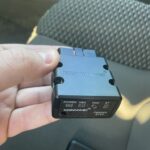For automotive technicians, a reliable Scanner Device is indispensable. Whether it’s for diagnostics, calibrations, or system checks, connecting your scanner to your Windows workstation efficiently is crucial. While modern Windows operating systems are designed to automatically detect and install many devices, setting up a network scanner device may sometimes require a few manual steps. This guide will walk you through ensuring your scanner device is properly installed and ready for use in your automotive repair shop.
Automatic Installation of Your Network Scanner Device
In most cases, connecting your scanner device to your Windows PC is straightforward. If your scanner is powered on and connected to your local network – be it via Ethernet or Wi-Fi – Windows should automatically detect and initiate the installation process. This plug-and-play functionality extends to various scanner types, including:
- Bluetooth Scanners: Ideal for wireless connections within a limited range, often used for portable diagnostic tools.
- Wireless Scanners (Wi-Fi): Offering greater range and flexibility, suitable for larger workshops.
- Networked USB Scanners: Scanners physically connected to another computer but shared across the network.
Here’s how to check if Windows automatically installs your scanner device:
-
Access Printer & Scanner Settings: Begin by opening the Windows settings menu. Click on the Start button, then select the Settings icon (gear icon). Navigate to Bluetooth & devices and then click on Printers & scanners. Alternatively, you can use this shortcut: Open Bluetooth & Devices > Printers & scanners
-
Initiate Device Addition: In the Printers & scanners window, look for the “Add printer or scanner” section and click the “Add device” button.
-
Windows Scanner Device Search: Windows will now start scanning your network for available scanner devices. This process may take a few minutes, depending on your network size and device responsiveness.
-
Select and Install Your Scanner: Once discovered, your network scanner devices will be listed in the Printers & scanners window. Locate your scanner device from the list and click the “Add device” button next to it.
-
Installation Completion: Windows will proceed to install the selected scanner device. Upon successful installation, your scanner will appear as an installed device within the Printers & scanners window, ready for use with your diagnostic software.
Manual Installation if Automatic Detection Fails
Occasionally, Windows may not automatically detect your scanner device. This could be due to network configurations, scanner compatibility issues, or other unforeseen factors. In such cases, manual installation is a simple alternative:
-
Navigate to Manual Add Option: If your scanner isn’t listed after the automatic search, in the Printers & scanners window, click the “Add a new device manually” link, typically located next to the message “The printer that I want isn’t listed“.
-
Follow Manual Installation Prompts: The “Add Printer” window will open, presenting you with various options for manual installation. Follow the on-screen instructions, which may include selecting your scanner device from a list of manufacturers and models, providing a network address, or using installation media provided with your scanner.
Helpful Tips for Scanner Device Connectivity
-
Multifunction Printers: If your scanner device is part of a multifunction or all-in-one printer, Windows might initially recognize it only as a printer. To verify scanner functionality, select the printer in the Printers & scanners window. If the device is also detected as a scanner, “Scanner settings” will be listed as an option in the device’s settings page.
-
Wireless Network Consistency: For wireless scanner devices and Windows PCs, ensure both are connected to the same wireless network (SSID). This is a common point of oversight and crucial for network communication.
-
Manufacturer Instructions are Key: For specific instructions on connecting your wireless scanner device to your network, always refer to the manual provided with your scanner or the manufacturer’s official website. These resources often contain detailed, device-specific guidance.
By following these steps, you can confidently install your scanner device on your Windows system and ensure it’s ready to support your automotive diagnostic and repair tasks. A properly connected scanner device is the foundation for efficient and accurate work in any modern auto repair facility.
